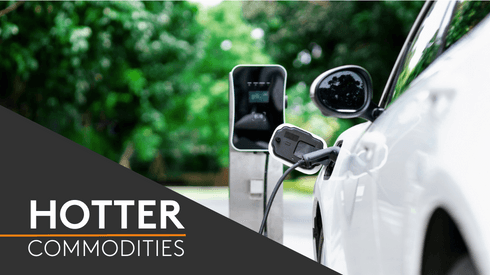Historically, lithium prices were determined via annual or longer-term contract negotiations between producers and consumers, with a degree of fixed pricing. As a result, there was typically little transparency into the ‘tradable’ level for lithium.
Over time, while volumes of material increased and new companies entered the market, this trend began to shift with greater importance placed on price transparency. As a result, attention on price-reporting agency (PRA) reported prices began to grow.
The lithium market has now evolved further with PRA-published lithium prices now underpinning global contracts, whether that be for technical-grade or battery-grade lithium salts, or spodumene.
In many respects, this is a typical stage in the maturation process of many markets. Many commodity markets utilize PRA-published prices as the benchmark for contracts.
Cobalt is one such example of this, where the Fastmarkets cobalt standard grade, in-whs Rotterdam, $/lb price operates as the benchmark price for cobalt metal globally.
Given the relatively recent adoption of PRA-produced prices as the basis for contracts, scrutiny of such prices remains high.
The market has undergone significant price volatility over the past two years, with seaborne Asia battery-grade lithium hydroxide and carbonate prices rising from single digits in 2021 to a peak of over $80 per kg in 2022. Over the course of 2023, prices declined by around 80%.
A similar trend was observed in spodumene, where prices declined more than 80% in 2023.
Fastmarkets most recently assessed the lithium hydroxide monohydrate LiOH.H2O 56.5% LiOH min, battery grade, spot price cif China, Japan & Korea at $13.40-14.50 per kg on May 29.
Fastmarkets assessed the lithium carbonate 99.5% Li2CO3 min, battery grade, spot prices cif China, Japan & Korea at $13.50-14.50 per kg on May 29.
Periods of low liquidity
Outside of China, only a small percentage of the overall volumes of lithium produced annually are traded via the spot market currently.
The vast majority of material is still tied to longer-term agreements, although liquidity and participation in the spot market is steadily increasing.
This is not uncommon in commodity markets, with spot transactions typically only making up a small percentage of overall liquidity.
But there are structural reasons why spot liquidity remains lower in lithium compared with other battery raw materials, including shelf-life concerns as well as the qualification process material goes through before use in battery-grade applications.
Fastmarkets’ price discovery process
Fastmarkets’ price assessments and methodology aim to capture the ‘tradeable level’ of the market.
To achieve this, a dedicated team of reporters survey the market on a daily basis, collecting data from active market participants in the form of liquidity, bids and offers, liquidity heard in the market and also indications of the tradable level for lithium.
Once this data is collected and inputted into our proprietary data system, the reporters look to establish a hierarchy of data basis significance.
Significance is determined by the extent a data point reflects a tradeable level for lithium, on an open and competitive basis.
The open and competitiveness of data relates to the additional context of a data point. For example, is it connected to a longer-term agreement, is there evidence of distressed activity, etc.
Prior to publication, all lithium prices go through two stages of review before publication. The first stage is with a reporter familiar with the market and the final stage is by a senior member of the team.
At each stage of this review price, the data and the set price range are scrutinized to ensure it accurately reflects the data and provides clear justification for the range.
The published price range reflects the data reported which is of highest significance and confidence for that session.
Transactions are the most significant data point for reporters in indicating the tradable level for lithium.
Data beyond liquidity
However, as noted, lithium as a market is prone to periods of illiquidity on a spot basis.
This means that there can be a number of consecutive pricing sessions where no deals are reported.
In this time though, the lack of liquidity does not mean that a price is not moving.
Factors such as supply cuts, logistics disruptions, rallying or decreasing demand and many more can all impact the value of a commodity. Fastmarkets’ ability to look at data beyond liquidity enables prices to update and reflect in real time to market dynamics.
Data points such as bids and offers particularly can represent significant data points in the absence of liquidity because they provide an insight into the sentiment of the market and the divide between the buy and sell side.
This ensures that prices are not able to be left stagnant due to the absence of liquidity, despite shifts in market fundamentals.
This flexibility to use a breadth of market data can give confidence to market participants about the timeliness and reflectiveness of the price assessments published by PRAs such as Fastmarkets.
Our full methodology for lithium can be found here.
Get transparency into the market movements with our battery raw materials price forecasts and market outlooks. Download a sample of our lithium long-term forecast now.
.






